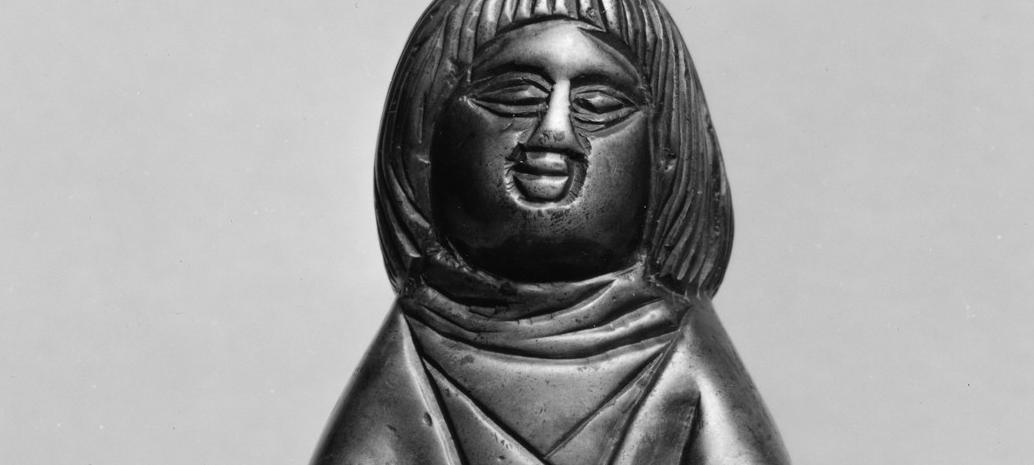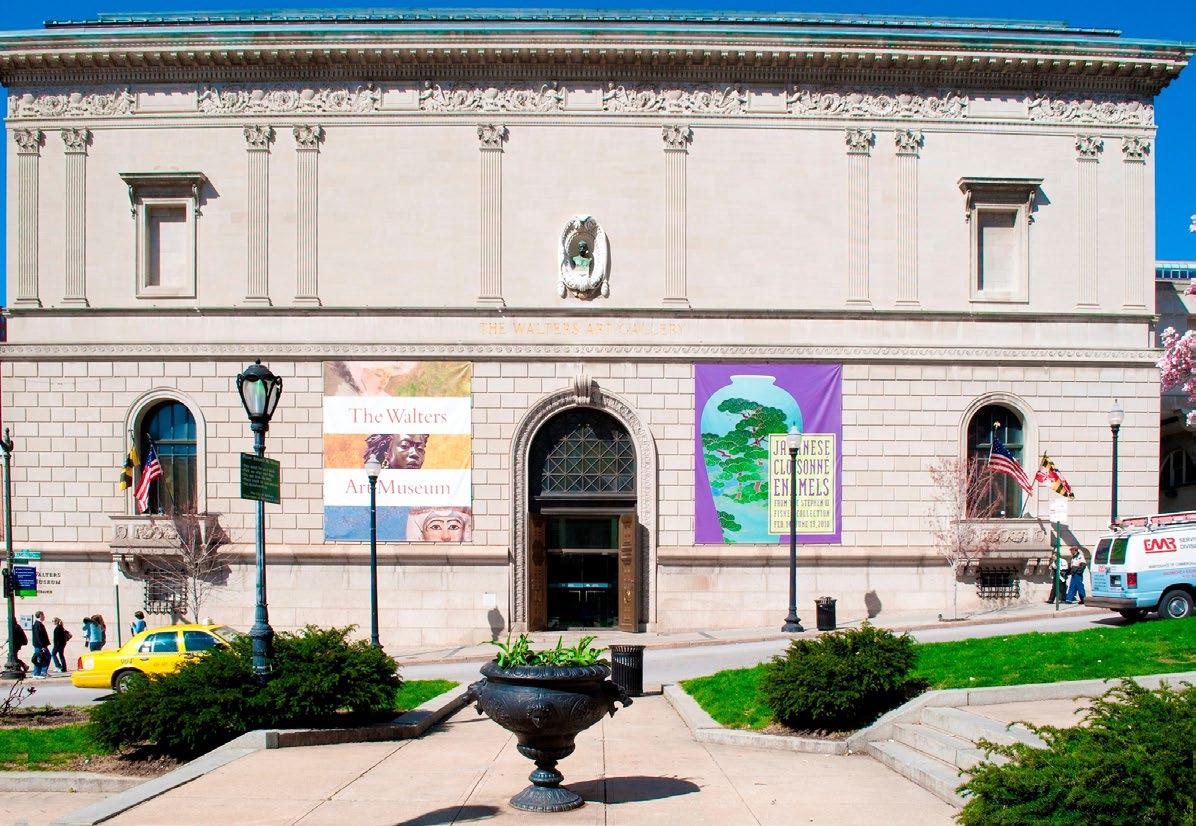The Walters Art Museum



When you’re a museum housing as many as 50,000 works of art spanning around 5,000 years, keeping track of such a diverse collection is no easy feat. Especially when sharing those treasures with a digitally savvy public audience is an important part of your manifesto.
This was the challenge facing The Walters Art Museum in Baltimore. With around half of its collection now digitalised for public consumption, digital asset management is a key undertaking for Systems Manager for Data and Digital Resources, Kate Blanch.
As Kate explains, “What makes our collection challenging from a digital resources point of view is that we have every type of object you could possibly imagine, from Japanese screen prints to Egyptian mummies. Every museum has really unique work flows around the creation of digital resources, especially now there are so many types. We are a very progressively open access, public domain institution, so public access for our digital resources is a primary part of our mission.”
For The Walters, digital resources primarily means images. Kate recalls early attempts at digital asset management as an involved system of meticulous housekeeping and admin;
Before ResourceSpace, our digital asset management consisted of a very involved file folder and file naming structure, so we did a huge amount of organisational work. I think that a lot of people are in that situation, it was pretty clunky
“ “
“Before ResourceSpace, our digital asset management consisted of a very involved file folder and file naming structure, so we did a huge amount of organisational work. I think that a lot of people are in that situation, it was pretty clunky.”
“We then used a very small DAM, which was not very good. We could never stabilise it, it was difficult to train people to use and it was difficult from a systems point of view to get it working. The search engine didn’t work, it halted on certain metadata… it choked at every juncture, everything we tried to do with it.”
Luckily, Kate had become familiar with ResourceSpace as she looked for a better alternative.
“I had seen a couple of presentations on ResourceSpace. We decided to consider open source, and ResourceSpace emerged as the front runner. We were concerned given our previous experience where we were completely limited in customisation and only had one option for support and development, we’d been really stifled.
We really wanted something that we could have the option to build into other applications and into our web access platforms. We also liked that it was written in PHP because that was a really supportable language for us.”
The Walters now has over 300,000 images of its collections in ResourceSpace today. Processing the huge amount of data that this involves has been made dramatically easier with the ability to integrate ResourceSpace with The Museum System (TMS), the most widely used collections database for the industry.

“The TMS link is probably the biggest and most valuable customisation that we’ve had because it’s saved us decades of cross cataloguing! We’re able to pull data from our collections management database upon upload, and it also syncs nightly to detect changes in TMS.
We can publish images to the web from ResourceSpace now that all our collections’ data rides along with each image. This is a huge bonus for us… ResourceSpace rolled the TMS feature into the base code and so many other museums have also started to use it. It’s awesome, we just love it.”
The TMS integration has also facilitated a new approach to managing rights and reproductions. Kate explains the difficulty faced by museums:
We decided to consider open source, and ResourceSpace emerged as the front runner “ “
“Rights and reproduction issues in museums are really complicated because you have two layers; rights around the actual physical object in our collection, and rights around the photographing of it.
A lot of people catalogue object rights in TMS, and we can now make this flow through to ResourceSpace so that we can sync it up with image rights. All of a sudden we have a beautiful formula for making rights declarations, and that’s been huge.”
Curating such an extensive collection also involves preservation and the constant monitoring of object condition, another area where ResourceSpace has made a significant difference to working practices.

We also use it for condition reporting, and this is going to sound like a ResourceSpace commercial, but the shareability has totally changed our world
“ “
“We also use it for condition reporting, and this is going to sound like a ResourceSpace commercial but the shareability has totally changed our world.
Because it’s so easy to share in ResourceSpace, either by email or in collections, and because we can access ResourceSpace off site, which is another new thing for us, our registrars will upload condition reports into ResourceSpace and then wherever they are in the world they can have access to them at any time. They actually do these documents on an iPad now and then just upload them to ResourceSpace, so it’s amazing.”

It’s not just condition reports that are easy for The Walters Art Museum to share via ResourceSpace, as sharing resources with both colleagues and the public has been revolutionised for the institution.

“Public access and image delivery channels to our public audience is a huge mission for us as a museum, and now we can share with the API, we can share by email, we can share in collections, we can also redesign our website… eventually ResourceSpace will become the back end for our online collections site. The actual resources are stable and packaged so well in ResourceSpace that there are so many options and potential around how you can share.”
The actual resources are stable and packaged so well in ResourceSpace that there are so many options and potential around how you can share
“ “
To say that The Walters has been pleased with the features of ResourceSpace wouldn’t do the effect it has had on the organisation justice. We asked Kate to talk us through some of the system’s most useful features and the results that she’s seen as a direct result of their implementation.
“One of the amazing things that ResourceSpace does that has helped us so much is the system of upload, pending submission and pending review. In our old DAM, we just let people put stuff in and it just quickly became a dumping ground because we had no checks and balances. The notification system that comes with ResourceSpace makes it so easy for us to manage the queue. It all works so much more smoothly than we anticipated.
And I don’t know of any other system where you have that much flexibility about your quick search. You can actually tune a simple search; we’ve never been able to do that in another application. You can get the results that work for your own types of resources, and I think it just makes it a lot easier to manage searching metadata.”
ResourceSpace has taken our time from 40-50 hours a week down to 12-15, across 6-8 people. There were so many steps before
“ “

“ResourceSpace has taken our time from 40-50 hours a week down to 12-15, across 6-8 people. There were so many steps before.
We have more built-in admin tools than we’ve had with any other system. What you get out of the box is actually incredibly powerful. The admin tools are really user focused, there’s a lot of thought behind them. I just can’t say enough about the product; it makes my job a lot easier.”
As Systems Manager, Kate is at the front line of the museum’s IT department, and has evolved a productive working relationship with the ResourceSpace team.
“We rely on having a support contract because we have a really small IT team. It has been so wonderful to work with a company whose focus is on development. They all know the product so well that it’s not just tech support, you actually get access to developers and that’s incredible. There’s always a really high service level, there’s never a dead end.
What I’m learning is actually enriching the technical knowledge of the institution to a much greater degree; you’re learning a tool set with open source, how to manage PHP applications, that’s huge. We’ve been incredibly happy with it.”
There’s always a really high service level, there’s never a dead end “ “

Founded in 1931, The Walters Art Museum in Baltimore, Maryland is internationally renowned for its collection of art. The collection presents an overview of world art from pre-dynastic Egypt to 20th-century Europe, and counts among its many treasures Greek sculpture, Roman sarcophagi, Old Master paintings and 19th-century masterpieces. www.thewalters.org
ResourceSpace is the web-based Digital Asset Management software of choice for leading commercial, academic and not-for-profit organisations, offering a convenient, productive and easy to use solution for organising and sharing files. We help organisations improve efficiency, encourage collaboration, and free up time and resources. www.resourcespace.com